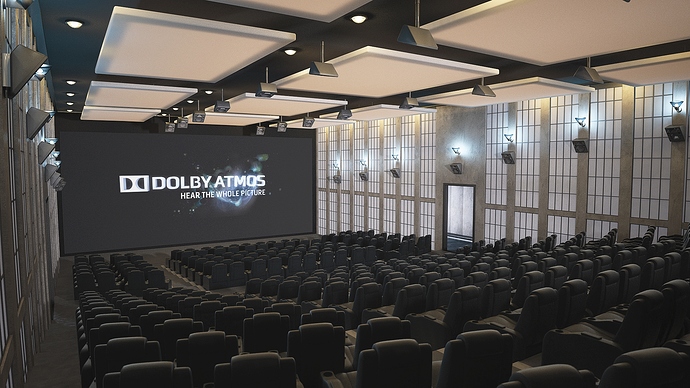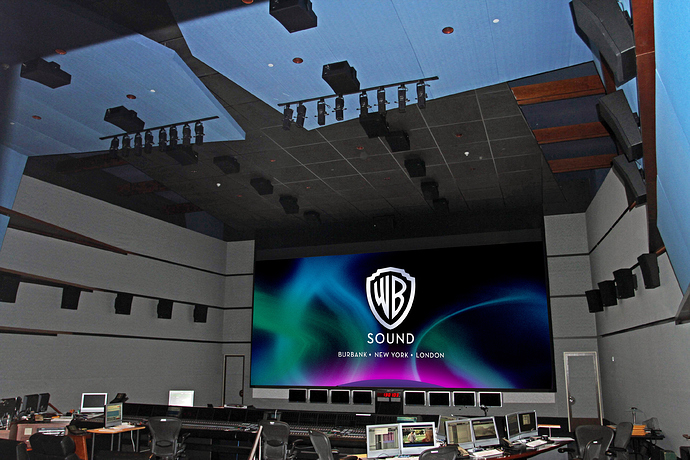Looks pretty good. GAS attack!
Definitely interesting looking. I’ll be curious to see what others think of it as they start using it.
The multichannel replacement/augmentation alone looks worth the price of admission - skip to 4:30 to see it:
https://youtu.be/tNVB__3K0wc
Definitely looks cool. Seems like they went all out on this one. I’m happy to see some of the EZDrummer features put in there. I always felt is somewhat strange that EZDrummer’s midi building features were better than SD. Now I know why.
DUDE!!! skip to 8:45!!!
You can mix in 11.1 surround!!! NO WAY! That would make this the very first Atmos compatible drum plugin that can do multi-channel prints. Incredible. That alone is worth the price of admission on my end 
Oh gosh…and its true 11.1. Not just 11 output busses. Amazing.
Edit: for anyone who doesn’t know, 11 channel surround is the minimum standard for Atmos. You configure it in a 7/4 (seven surround, four ceiling) or a 9/2 (nine surround, two ceiling). Both equally 11 which is where we get the minimum of 11 for the Atmos standard.
Actually, watching this video, it made me wonder at what point we need to ditch the whole VST/AAX/whatever format for this sort of thing. VST is great for processing effects, but has tons of limitations, mostly being that it’s inherently designed for real time usage.
This thing is about 10 steps beyond what a normal VST or VSTi does in that it’s like a DAW inside a plugin. I guess re-wire tried to solve the issue, but it feels so clunky to me.
Note that this is the case with most drum plugins though. Machine, Spark, BPM, Geist, Vienna, Ethno, AD2, and BFD all have built in sequencers and mixers within the plugin. Those seem like pretty normal VST’s to me.
I thought re-wire was intended for plugins that live outside the normal means of instantiation on an insert slot. To lauch a rewire plugin you never assign it to an insert slot (in any app I’m aware of). You would launch your host, launch your re-wire slave, then they find each other automatically. Then you’d route TO the plugin using external midi instrument sends as if you were sending out of box to an external hardware MIDI module. Then instead of bring a plugin back to the insert i/o path, you’d bring it back to a subgroup. I can’t say if this is true of all Rewire software, but thats what I thought distinguished re-wire from something you just throw on a track. Did I miss something somewhere?
I thought you, as a film guy, would be stoked about that! Watch the original video where George Massenburg explains how he miked it for Atmos.
…for most of us though - well TBH, we’re flat out getting people to listen to our mixes in properly-configured stereo, so 11.1 seems just a tad OTT from my perspective…
It will no doubt come in handy when George Lucas calls me to mix the next Star Wars, though! 


You know they fired him…right?
Damn! And I was waiting on his call too!
Oh its all good. Same difference…just Kathleen Kennedy on the other line instead of George 
Hey man…as long as John Williams is still alive there’ll be plenty of stellar music (no pun intended) for you to mix for them!
…just remember us IRD folk when you get famous 
Toontracks’ next ground-breaking algorithm: BEARD Replacement:
https://www.youtube.com/watch?v=gTh6B7C5cI0
Every drum plug in that I have ever had has multi channel “prints” inc BFD 3, Superior 2, EZ Drummer, RMV .
That is NOT new in Sup 3. But thos i mentioned may not be “Atmos compatible”.
What’s new here is the ceiling mic’ing which gives a genuine shot at surround.
But seperate prints is so old it’s pre 2000.
Every drum plug in that I have ever had has multi channel “prints” inc BFD 3, Superior 2, EZ Drummer, RMV .
John, its not the same thing. Superior gives you 11 independent object panning positions. BFD merely gives you a stereo source which could be routed to 11 output busses. Its different. Think about it like this…
Say you’re in a 7.1.4 environment. That means you have 7 surround speakers, a mono sub, and 4 ceiling overheads. You can make a stereo BFD room mic pan into all 11 speakers, but the since there are only 2 BFD room mics, you will never have more than 2 unique sources spread out between all 11 tracks. Take the Exponential Audio Phoenix Verb. Its a 7.1 surround reverb. That means when applied to any source, the reverb will trigger 8 unique reverb tails out of each surround speaker.
So having an 11 bus instead of a 2 bus (for your master) isn’t the same as having 11 aux tracks that collapse into your 2 bus.
You can not pan front to back or top to bottom in a stereo mix, because you simply don’t have a Y or Z axis to pan on. Blackmagic guys do this with their hands like in the video. The Avid and Harrison guys use joysticks.
Edit: Giving something the illusion of moving ‘forward and backward’ in a stereo music mix, is obviously different than ACTUALLY moving it front to back in a surround mix. Thus the width, depth, and height in music mixing is different terminology all together.
But seperate prints is so old it’s pre 2000.
In music thats true. Prints in film aren’t the same as bounces in music.
Prints in film are an intermediate step that happens before the bounce, which is what you would call a render in film. If the final deliverable of a film is 7.1 surround, the prints would consist of 8 mono tracks. It has to do with how the final editing stage glues the audio to the film before packaging it for release.
I completely don’t understand but I accept what you say. You’re wrong about BFD3 though. I can route as many outputs as I wish on each kit piece.and they can be mono or stereo.
I can route as many outputs as I wish on each kit piece.and they can be mono or stereo.
I understand that. What I said is that you can not exceed stereo.
You need 11 MASTER busses to make an 11 MASTER bus prints. An 11 master bus IS NOT the same as 11 aux buses.
Each BFD aux bus can only send out in stereo. You can not send a single BFD kit piece out to a 5.1 surround spread, a 7.1 spread, a 9.1 spread, or an 7.1.4 atmos spread. Because no matter what aux busses you send anywhere, you will still only have TWO channels. A left and a right snare. A left and a right room. A left and a right kick. A left and a right ambience mic.
You’re wrong about BFD3 though.
Show me where any SINGLE kit piece has more than 2 samples (left and right) ever associated with a corresponding microphone. I’ll prove I’m right.
In BFD you can not control height, as you do not have an independent sample for the ceiling speakers only. You do not have a Y axis to work with.
In BFD you can not control panning from front to rear speakers as you do not have a sample for rear speakers only. You do not have a Z axis to work with.
This will probably help this conversation:
This is an Atmos THEATER.
This is an Atmos DUB STAGE (where they make the sound for the movie that shows in an Atmos theater).
See the speakers on the ceiling? The big deal about Superior, is that it can be integrated into this ‘environment’ because it has 11 master busses. That’s a first for a drum plugin.
ROFL. Man, it is a big deal. It’ll make such a difference to folks whjo listen to their mnusic on Ipods, Iphone etc with ear buds. Points all well taken.
ROFL. Man, it is a big deal. It’ll make such a difference to folks whjo listen to their mnusic on Ipods, Iphone etc with ear buds. Points all well taken.
John, when I said it was a big deal, I meant to the sound designers. I interpret this as an effort on behalf of Toontrack to try to stay ahead of the game, and predict where things are going in the future. I’m sure they realized the risk, namely that most people will only mix in stereo, as the primary purpose of this drum library is clearly music. And I’m sure they realize the limited number Atmos standard dub rooms and theaters. I don’t see how it hurts Toontrack at all to add the feature. The worst that would happen is no one uses it.

